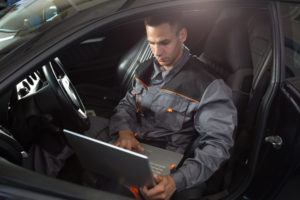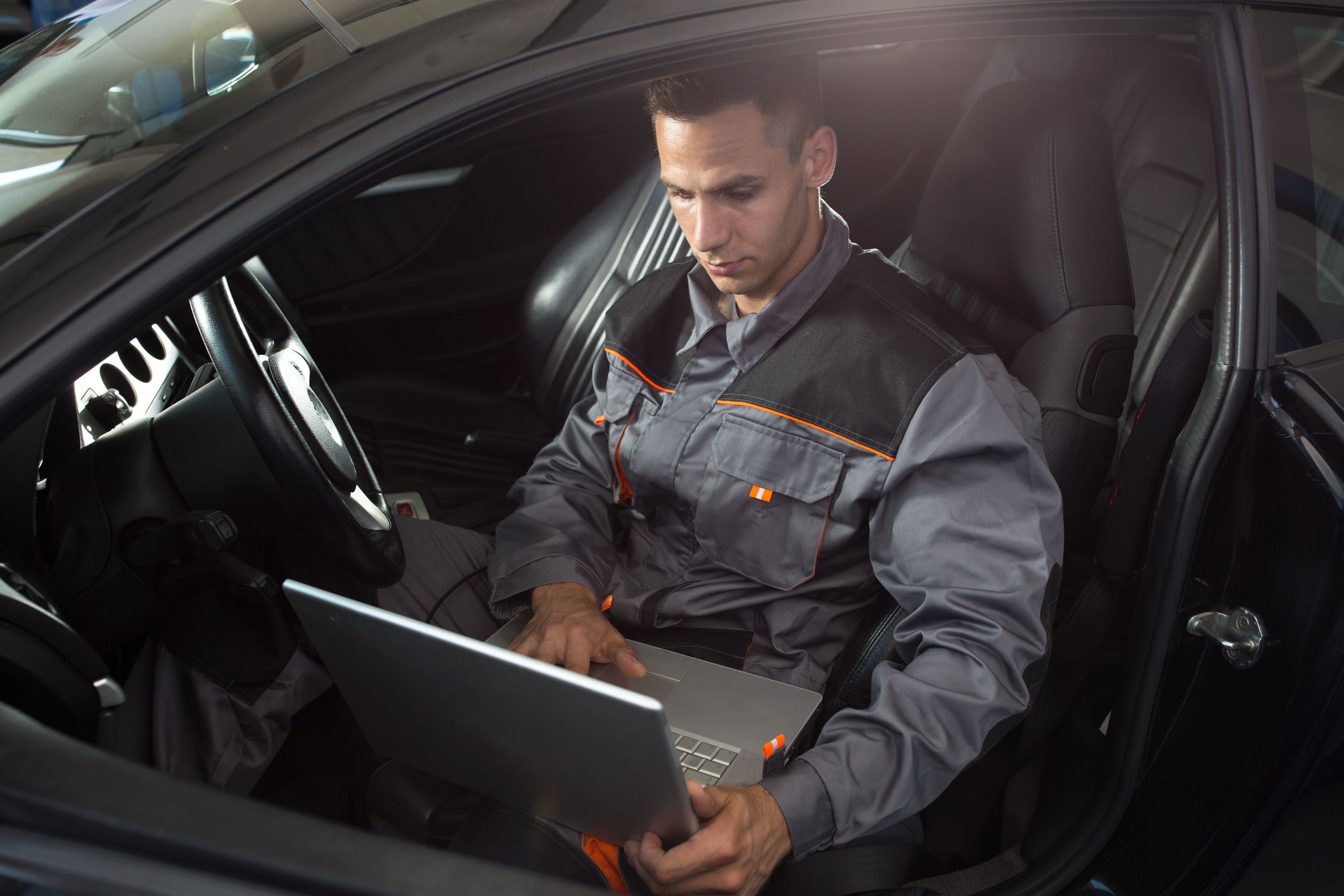 Does your Auto Repair Shop Perform Pre and Post Repair Scans?
Does your Auto Repair Shop Perform Pre and Post Repair Scans?
When you take your car to a repair shop after it’s been in a collision, your repair technician should walk you through the repairs and have your approval before moving forward. Depending on your insurance policy, your insurance provider will also be made aware of the repairs to be performed and their cost.
But, as a consumer, are you aware of the auto manufacturer requirements for safe repairs? Your repair technician and your insurance company should be. Currently, there is an industry-wide discussion over the need to scan vehicles electronically before and after performing repairs.
So, what is the discussion about pre and post-collision repair scans?
As automotive technology develops, advanced safety features are introduced, and vehicles are designed to automatically prevent accidents based on information from various computers and sensors, the proper repair and calibration of these sensors and computers becomes vital to the safety of drivers, passengers, and pedestrians.
There are two main sides to the argument: the original equipment manufacturers (OEMs), which are the automotive names you know: Honda, Toyota, Nissan, GM, Ford, Chrysler, et all, and the auto insurance companies.
The discussion is ongoing, but came to light when Mike Anderson, owner of Collision Advice, moderated a panel discussion regarding repair scans at NACE in Anaheim, California, in 2016.
Original Equipment Manufacturers
Many OEMs have released official statements saying that in order to be sure that repaired vehicles are safe to drive and the sensors and computers within them are reliable, they need to be scanned before and after repairs.
OEM1Stop, a website dedicated to providing accurate repair information directly from OEMs, contains a collection of official OEM position statements regarding Vehicle Repair Scanning. While not every position statement is exactly the same, all OEMs do recommend scans and some require them. The specifications for when they’re required vary.
The pre-repair scan should tell repair technicians whether the computers need to be repaired, replaced, or recalibrated when the vehicle comes into the shop. The post-repair scan will tell them whether the repair itself corrected (or caused) any errors before the vehicle is returned to its owner.
During the panel discussion at the 2016 NACE event, the OEM panelists agreed that performing diagnostic scans is necessary. Brian Wayne, the representative from Fiat Chrysler Automobiles, stated that the Chrysler Pacifica contains over 200 computers, many of which don’t trigger dashboard warning lights for every little problem.
Imagine having a separate dashboard warning light for every issue or even every system within the vehicle! According to OEMs, it’s not realistic and scanning vehicles is the only way to identify and diagnose every issue.
Auto Insurance Providers
Insurance providers, who are often required to pay for these scans, argue that they may not always be necessary, and although they prioritize consumer safety, they’d prefer if OEMs provided more specific guidelines regarding the need to perform the scans rather than stating that they’re needed for every single repair.
For example, during the panel discussion, Chris Evans of State Farm argued that scanning the vehicle after a repair can be a waste of time and money. He said, “A scan isn’t always necessary… we don’t always want to have to pay for it. What if you replace something where no embedded technology exists? No technology has obviously been affected.”
In other words, when the damage and repairs done on every vehicle are unique, how can the scan requirements always be the same? Does requiring these scans raise the cost of repairs? If so, does that additional cost fall on insurance providers, OEMs, repair shops, or consumers?
Insurance providers also argue that not every vehicle out there has advanced safety features that rely on the proper calibration of sensors or contains over 200 computers. In some vehicles, there are dashboard warning lights for any issue that would arise. American Honda Motor Company’s representative, Chris Toby, had a response to this argument during the panel discussion.
“We looked into establishing a… first year and a last year for this… we actually started triggering codes without [dash] lights in 1996.” said Toby, “Realistically, any car that you’re going to… do a repair on is going to need a scan.”
Stuck in the Middle of the Argument
Unfortunately, the debate is ongoing, putting consumers and repair technicians in the middle. If OEMs require scans and insurance companies refuse to pay, repair shops and consumers may be left with a tough decision and a hefty bill. Both the hardware and software needed to perform the scans is expensive and requires updates in order to be accurate, and accurate calibrations can be tricky to perform without the right tools and training.
Ultimately, discussing the issue and spreading awareness of the cost and safety issues is the first step toward resolution. In the meantime, it’s important to stay in touch with your repair technician and be aware



